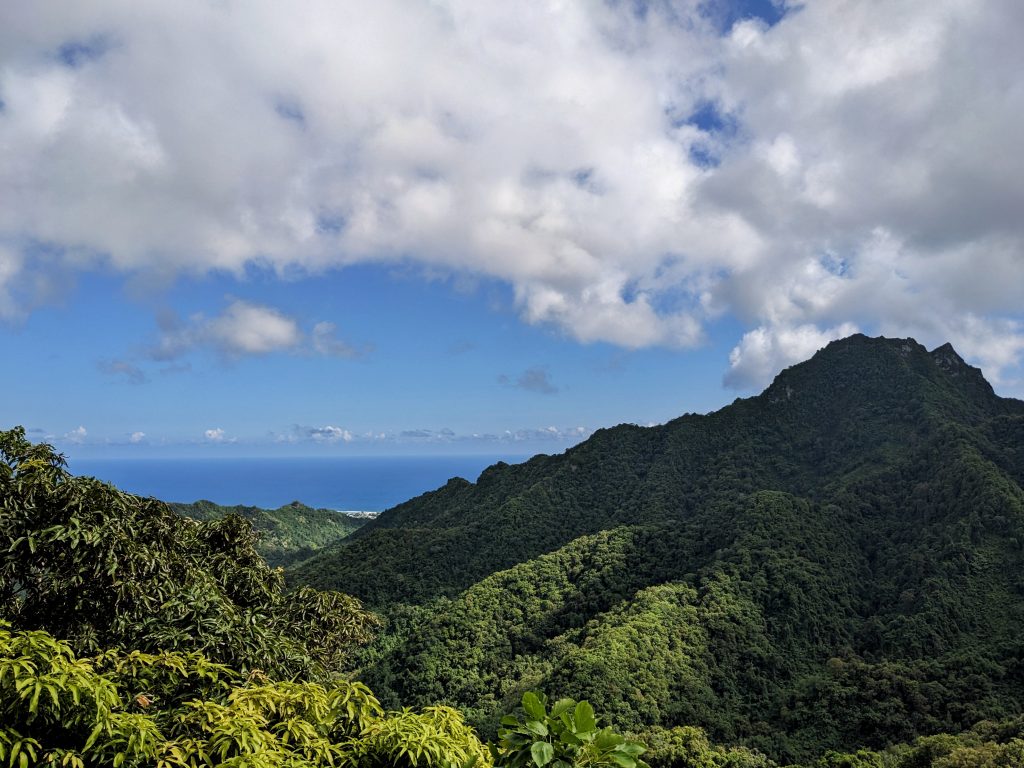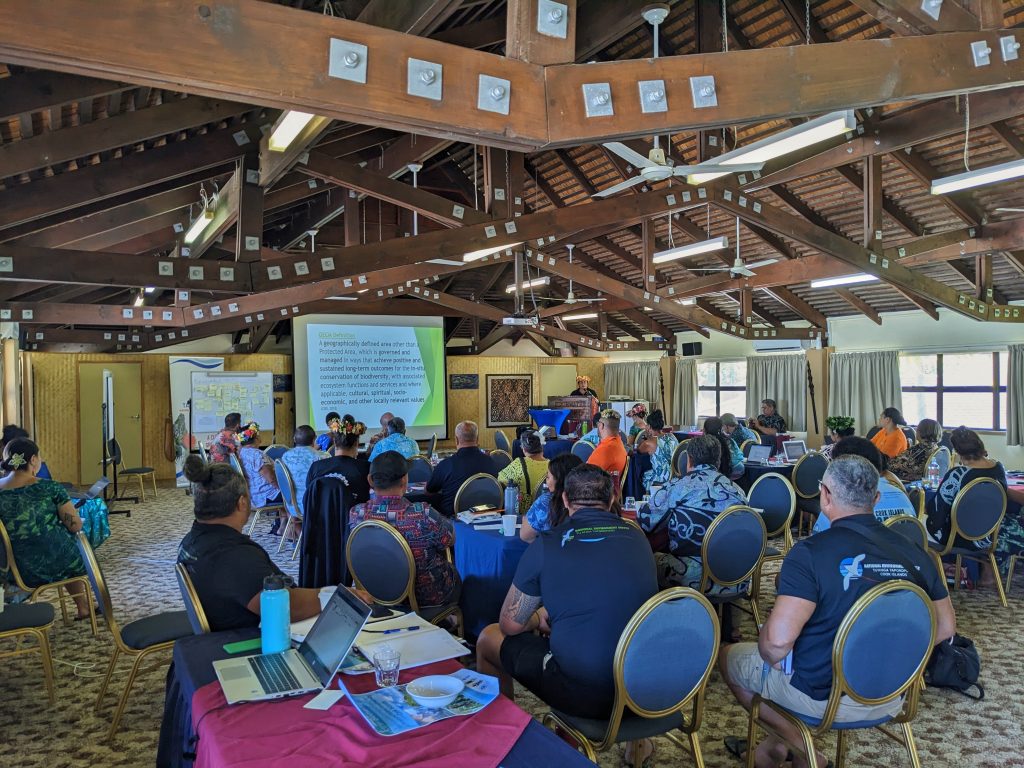From flycatchers to forests : How the Cook Islands are championing nature
Saturday 16 December 2023 | Written by Supplied | Published in Environment, Features, National, Weekend

Around 60 per cent of the Cook Islands’ land is still covered by tropical forest (Image: Benjamin Lucas)/23121521
Home to the Rarotonga flycatcher, Cook Islands fruit-dove and coconut crab, the 15 South Pacific islands that comprise the nation have a rich natural heritage. Around 60 per cent of the nation’s land is still covered by tropical forest, and its lagoons and seas have an abundance of diverse marine life.
To safeguard these unique ecosystems, over the past year the Cook Islands have made strides to recognise Other Effective Area-Based Conservation Measures (OECMs), working with partners including the Secretariat of the Pacific Regional Environment Programme (SPREP) and the UN Environment Programme World Conservation Monitoring Centre (UNEP-WCMC).
OECMs are sites that are outside of protected areas that achieve the long-term effective conservation of biodiversity, even though they may be managed primarily for other reasons. They may encompass diverse approaches including heritage or cultural sites, military reserves, or territories and areas conserved by Indigenous Peoples and local communities. Significant industrial or extractive activity is likely to exclude an area from consideration as an OECM. OECMs are an important tool in reaching Target 3 of the Kunming-Montreal Global Biodiversity Framework (GBF) to protect and conserve 30 per cent of the Earth by 2030. However, with the definition for OECMs only adopted by the world’s governments in 2018, many are yet to be formally identified.
To support the Cook Islands to continue to make progress towards their national targets, UNEP-WCMC has worked closely over the past year with its National Environment Service (NES), Secretariat of the Pacific Regional Environment Programme (SPREP), and IUCN Oceania to deliver an inaugural workshop and discussion paper on OECMs in the country.
The paper highlights more than 40 sites in the Cook Islands as having potential for recognition as OECMs. It builds on the knowledge generated from the extensive discussions during the workshop earlier this year, which convened representatives from government, local communities, traditional leaders, non-governmental organisations and the private sector.

The workshop in January 2023 brought together a range of stakeholders to discuss OECMs and identify potential sites (Image: Benjamin Lucas)/23121520
Benjamin Lucas, programme officer in UNEP-WCMC’s Nature Conserved team, supported the delivery of the workshop, presenting on the concept of OECMs and case studies to participants, and facilitating activity sessions to identify OECMs.
“The Cook Islands have taken a great first step towards gaining greater recognition for the diverse forms of conservation that take place in-country, establishing themselves as leaders on OECMs for the Pacific region. During the workshop participants were largely enthusiastic about the OECM concept, and the National Environment Service has already begun working with some of them to recognise their areas as OECMs. I am excited to see how the Cook Islands continue to explore this area, and the UNEP-WCMC team is pleased to be providing support,” says Lucas.
During the workshop, participants explored the possibilities and benefits of recognising and reporting sites as OECMs. Key incentives for such recognition include enhancing profile and support for locally conserved areas, preserving traditional knowledge and cultural practices, and increased opportunities to document these sites.
The subsequent discussion paper captures the key areas, questions, concerns and opportunities identified, providing a foundation for further progress. It provides recommendations for next steps on how the Cook Islands can begin recognising and reporting areas important for conservation as OECMs, as well as highlighting lessons for recognising OECMs in a global context.
The National Environment Service (NES) is now working with the Takitumu Conservation Area (TCA) Co-ordinating Committee and landowners of the three Ngati (tribes), whose land the TCA is on, to use the OECM assessment process to determine whether this 155-hectare forested area meets the Convention on Biological Diversity’s definition of an OECM. A second workshop is planned to bring in more stakeholders and deepen understanding of OECMs in the country.
Over the longer term, NES is working to update the Cook Islands National Biodiversity Strategy and Action Plan (NBSAP) and draft protected areas legislation with considerations for OECMs. It also plans to work with stakeholders to recognise more OECMs and report data on these to the World Database on OECMs.
Jessie Nicholson, biodiversity co-ordinator at the National Environment Service, says they are pleased to take this new concept of OECMs to conservation practitioners in our local communities.
“We are currently working with the TCA Coordinating Committee and the three Ngati (tribes) to undertake the full OECM assessment to bring recognition to the Takitumu Conservation Area (TCA) as an OECM site. The TCA is a fitting pilot OECM for the Cook Islands, as it is a community-conserved area where landowners and supporting partners have worked tirelessly for over 30 years to bring the endemic Kākerōri bird (Pomarea dimidiata, also known as the Rarotonga monarch or Rarotonga flycatcher) back from the brink of extinction, primarily through predator control efforts.
“The TCA will pave the way as the first OECM in the Cook Islands once the assessment process is finalised. NES looks forward to exploring OECMs in the future with conservation practitioners in Rarotonga and the Pa Enua (outer islands), where many of our traditional and community-conserved areas are.
“We thank our partners, UNEP-WCMC, SPREP and IUCN Oceania, for their ongoing support in this work.”
- UNEP




































